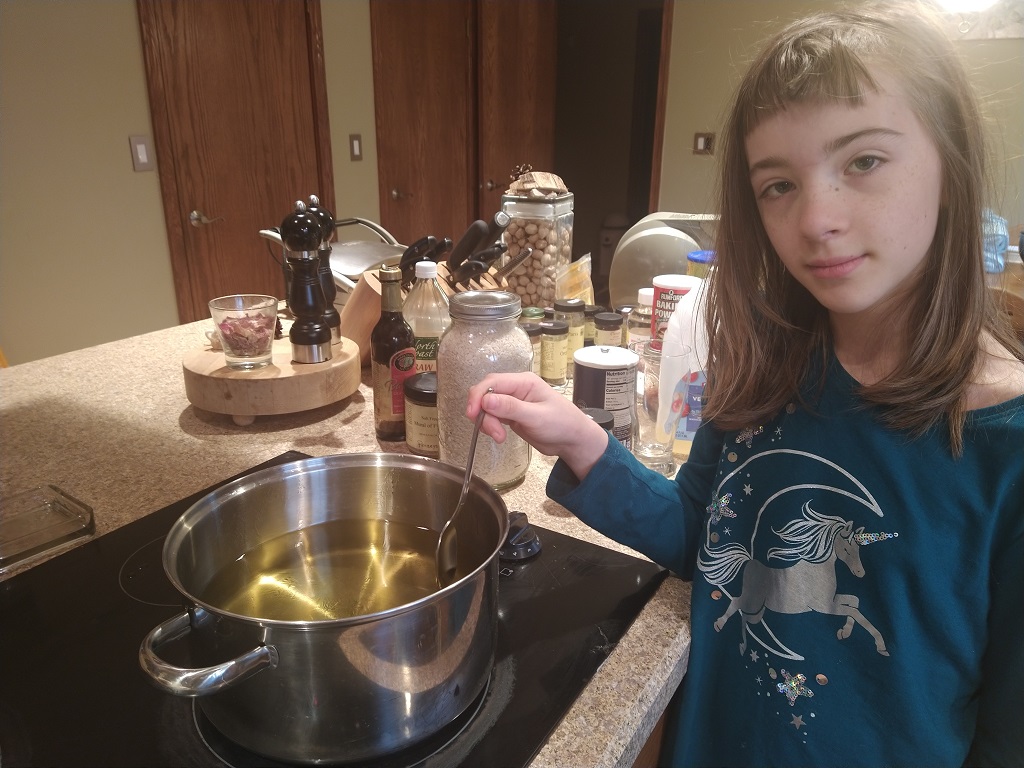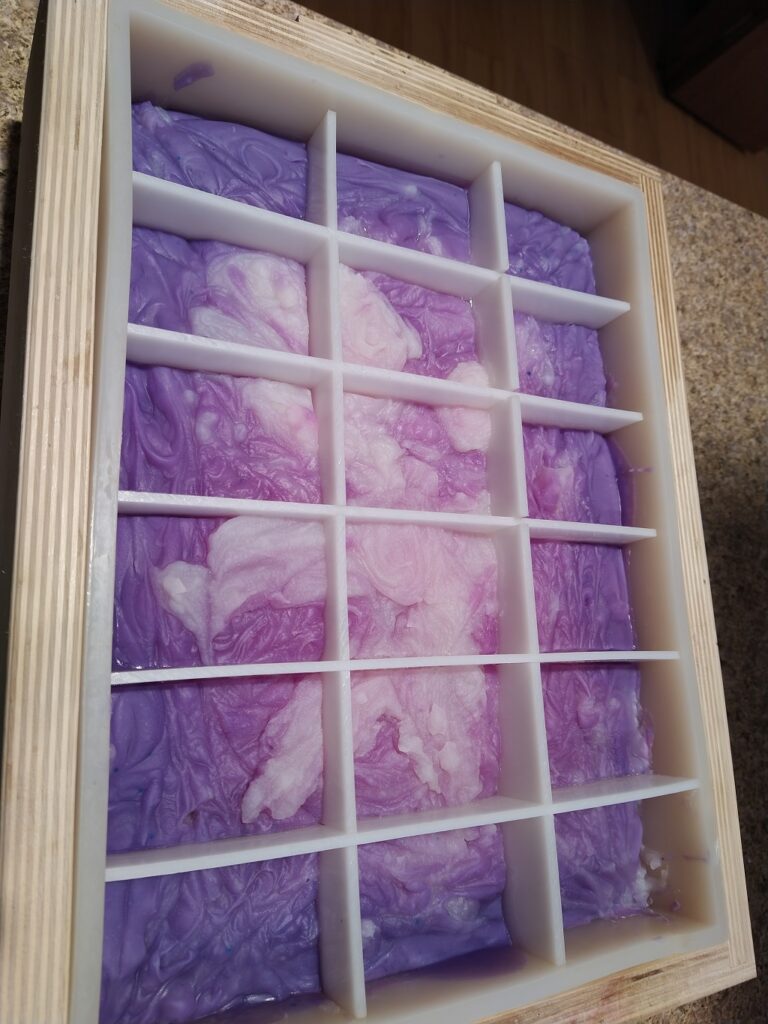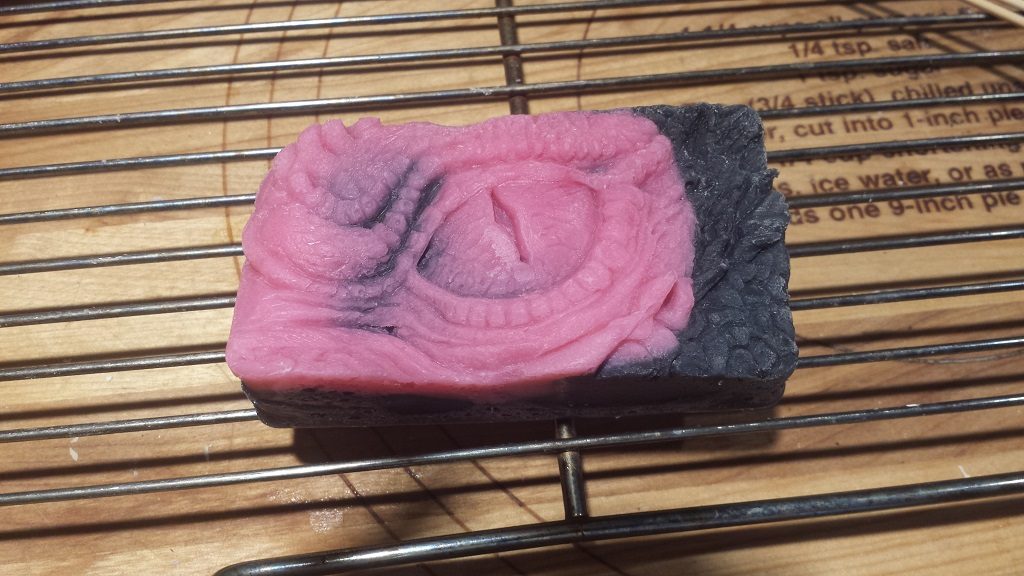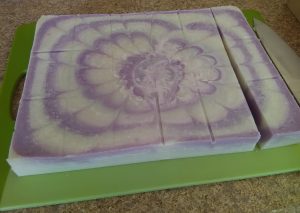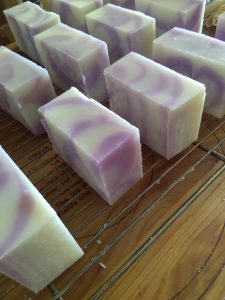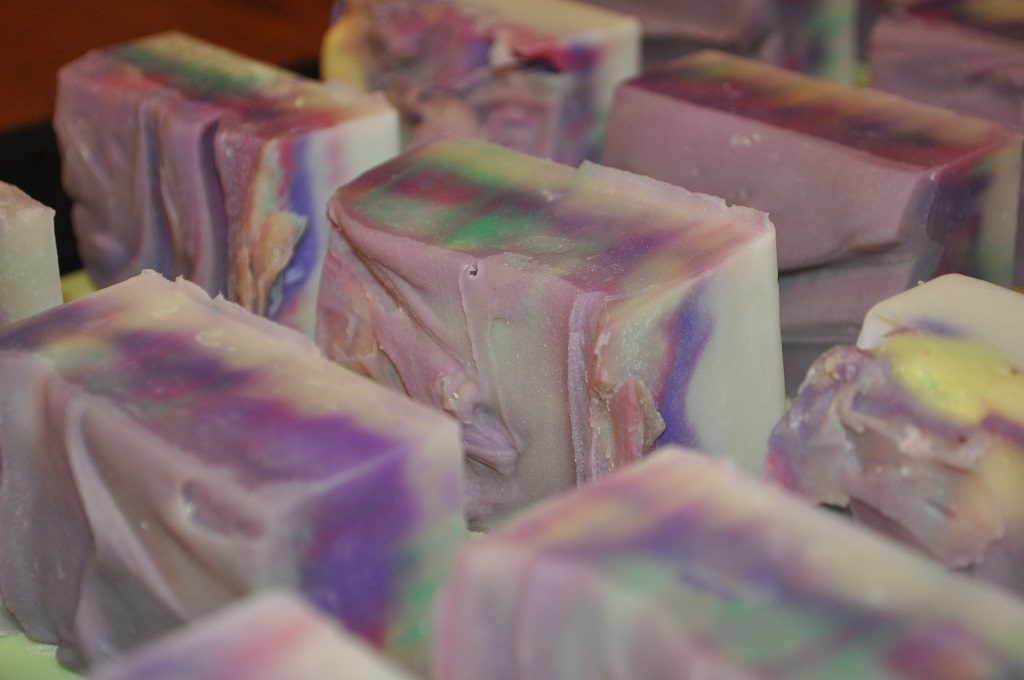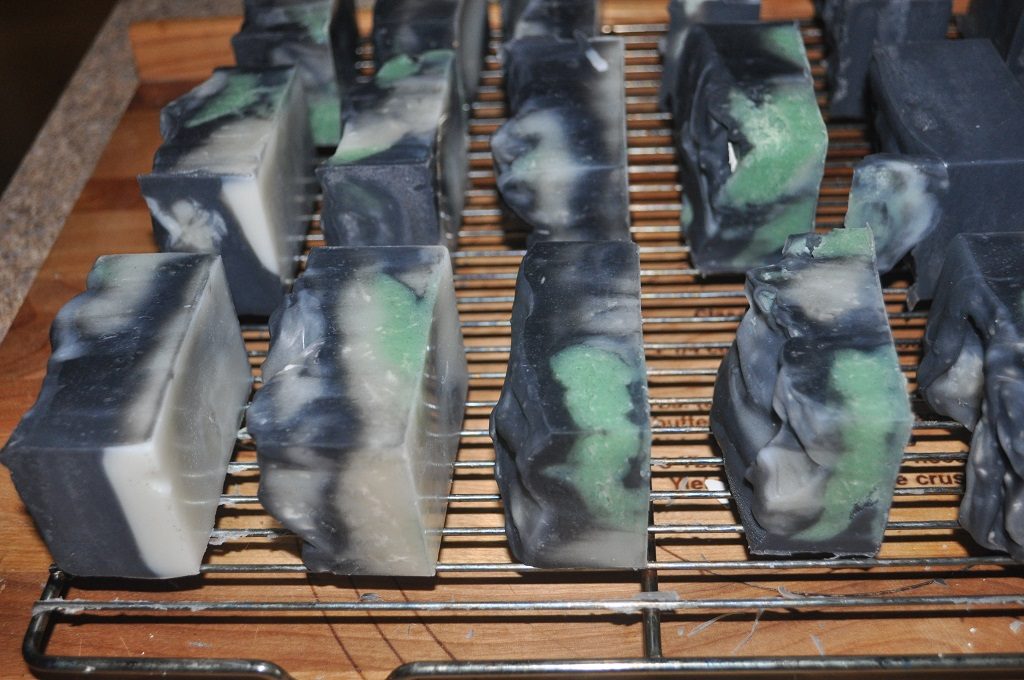I’ve been making my own soap for about three years now. I’ve used several different recipes, but my default is a 100% coconut oil soap recipe. I double the recipe to make a six pound batch of soap (66 oz coconut oil, 9.6 oz lye, 19.2 oz water, and 3-6 oz of essential oil if I add any).
The process is quite easy — put the oils (or oil, in this case) in a pot and heat until melted.
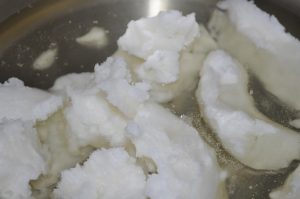
In a safe container (heat resistant plastic like polypropylene 5), combine the water and lye slowly — it gets HOT. I use a graduated pitcher from a science supply center. Soap recipes have a weight of water and not volume, so the markings aren’t useful for this particular application.
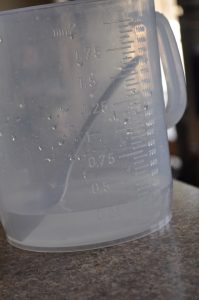
I turn the oven light on – it’s an incandescent bulb and heat the oven to about 110 degrees F. I then put the lye container and warm oil in the oven and let them set for an hour or so to reach thermodynamic equilibrium.
When the hour is about up, get everything ready. Always a stick blender. If essential oil, colorant, herbs, or abrasives are going to be added, I weigh them out and have them waiting. Remove the pot of oil and set it somewhere (Not a hot burner! This was the one thing that absolutely stumped me on my first batch — the instructions say to heat the oil, but it never says to remove the pot from heat!). Set the stick blender in the pot. Get the container of lye water. Turn on the stick blender and get the oil moving. Slowly add the lye mixture.
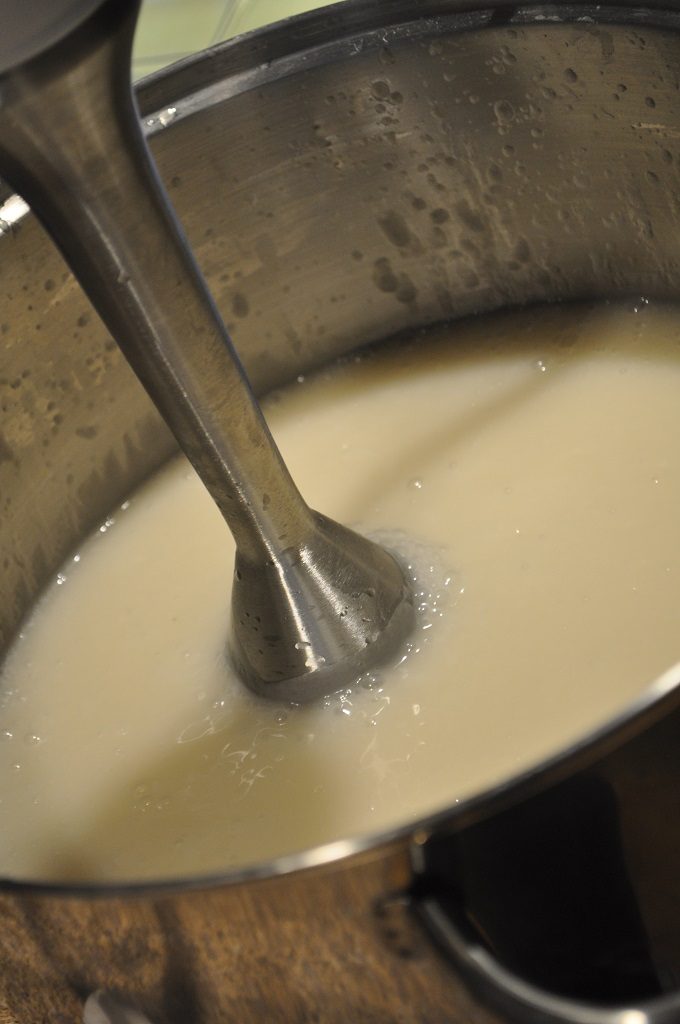
Keep the stick blender going until you reach ‘trace’ — kind of like making whipped cream or egg whites where there’s a soft peak and a firm peak state. You’re looking for it to thicken up enough that lines will form or a little bit dropped back into the pot stay in a little mound. You are NOT looking for something that holds peaks (it would be difficult to get into molds at that point).
If you are adding ‘stuff’ you want to do that at the first sign of trace. Some add-ins will accelerate trace (basically harden your soap quicker), and adding them into a medium trace can get you a big block of solid soap pretty quickly.
Once the soap mixture reaches trace, put into the soap molds. Tap the molds on a solid surface a few times to remove air bubbles. I place these molds on a cutting board (hard surface) and then place them back into the warm oven. Proper instructions tell you to wrap it up in towels to retain the heat. After about 12 hours in the warm oven, I turn off the oven light. Let it sit a few more hours to cool, then set on the counter overnight. If the soap is hard to get out a mold, pop the whole thing in the freezer – frozen soap pops right out.
Voila, you’ve got soap. Let it sit for a few weeks to cure (dry out).
